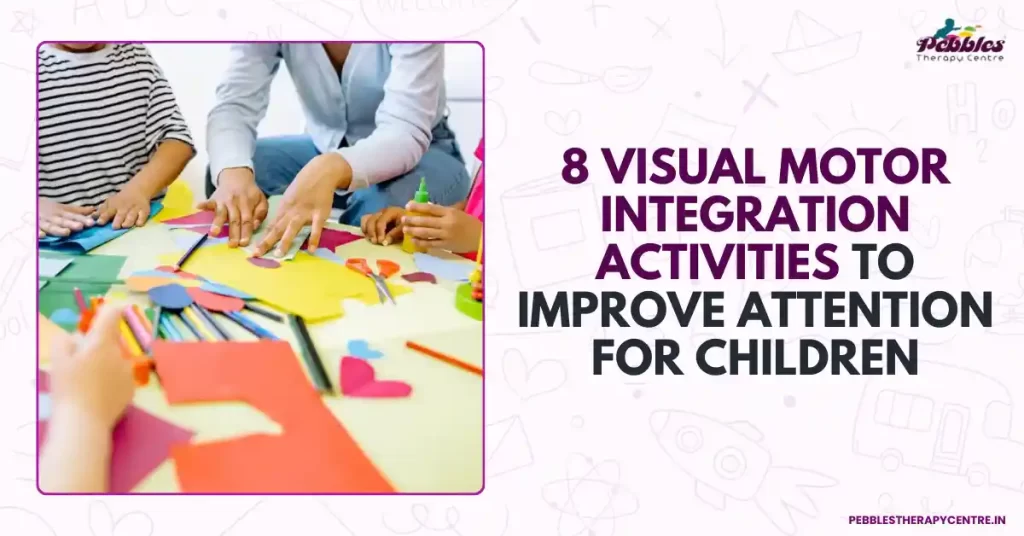8 Visual Motor Integration Activities to Improve Attention for Children
Helping kids focus can be a challenge, but visual motor integration activities make it fun and effective. These tasks blend visual motor skills with attention, supporting learning and play. This blog explains what are visual motor skills, their role in childhood, and how they boost concentration. We’ll share eight top visual motor integration activities, plus insights from visual perceptual activities occupational therapy. Start boosting your child’s attention today with these proven ideas!
What is Visual Motor Integration (VMI)?
Visual motor integration (VMI) is the teamwork between eyes and hands. It’s central to visual motor skills occupational therapy, combining visual motor processing disorder (seeing) with action (moving). Everyday vmi skills include writing or catching a ball—kids see, then do. Visual motor integration powers visual motor coordination, like copying a drawing. Weak visual motor integration skills can disrupt visual motor integration and handwriting, making visual motor integration occupational therapy key for kids who need extra help to shine.
Significance of Visual Motor Integration in Childhood
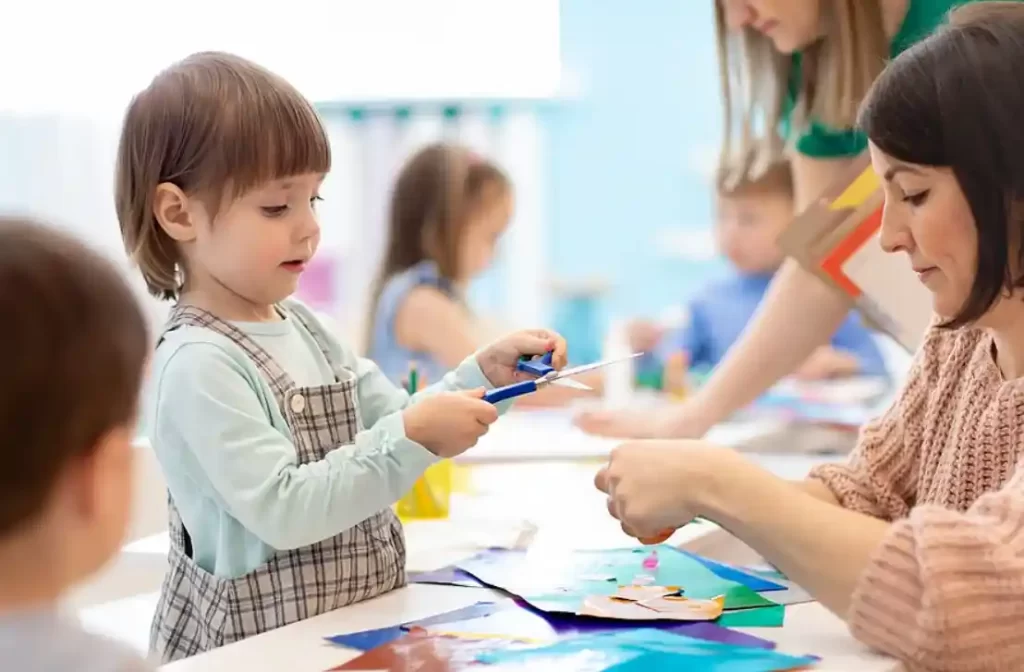
VMI skills are essential for cognitive and physical development. Strong activities to improve visual motor integration enables children to:
- Recognize and replicate letters and numbers correctly.
- Enhance hand-eye coordination for drawing, cutting, and games.
- Develop fine motor skills necessary for academic success.
- Enhance focus and attention in learning activities.
Children struggling with visual motor integration processing disorder may show signs of poor handwriting, difficulty copying shapes, and trouble following movement-based instructions.
Check Out:- 9 Fine Motor Skills Activities to Boost Handwriting for Kids
Connection Between Visual Motor Skills and Attention in Children
Weak visual motor skills can directly impact a child’s ability to focus on tasks. When children struggle with visual motor coordination, they may:
- Have trouble tracking objects with their eyes.
- Struggle to shift focus between different visual stimuli.
- Take longer to complete schoolwork due to poor visual motor processing.
By incorporating visual motor activities for kids, we can improve their attention span and ability to complete tasks with greater accuracy.
Benefits of Visual Motor Integration Activities
Visual motor activities deliver a treasure chest of perks:
- Attention Boost: Visual motor exercises like mazes lock in focus.
- Skill Precision: Activities for visual motor integration fine-tune hand-eye teamwork.
- Academic Edge: Activities that require visual motor integration and handwriting preps kids for writing.
- Self-Assurance: Winning at visual motor activities sparks joy.
From ot visual motor activities to visual motor integration activities early intervention, these gains fit age appropriate visual motor integration activities for 8 year olds, building a strong future.
Who Benefits from Visual Motor Integration Activities?
- Preschool and school-aged children developing fine motor skills.
- Kids with ADHD, dysgraphia, or learning difficulties who struggle with handwriting and focus.
- Children with developmental delays who need extra support in motor planning.
Check Out:- 6 Gross Motor Activities for Children with Neurological Delays
8 Best Visual Motor Integration Activities to Improve Attention
Dive into these eight standout visual motor integration activities designed to sharpen kids’ focus! Blending visual motor skills activities with fun, these unique tasks—from tracing to tech—boost attention and coordination. Perfect for home or occupational therapy, they’re your key to unlocking sharper minds in 2025!
1. Tracing and Drawing Shapes

Tracing letters, numbers, and geometric shapes improves visual motor integration handwriting by strengthening visual motor coordination.
How it helps:
- Enhances pencil grip and fine motor control.
- Improves letter formation and early writing skills.
- Boosts attention by requiring focus on detail.
2. Mazes and Puzzles
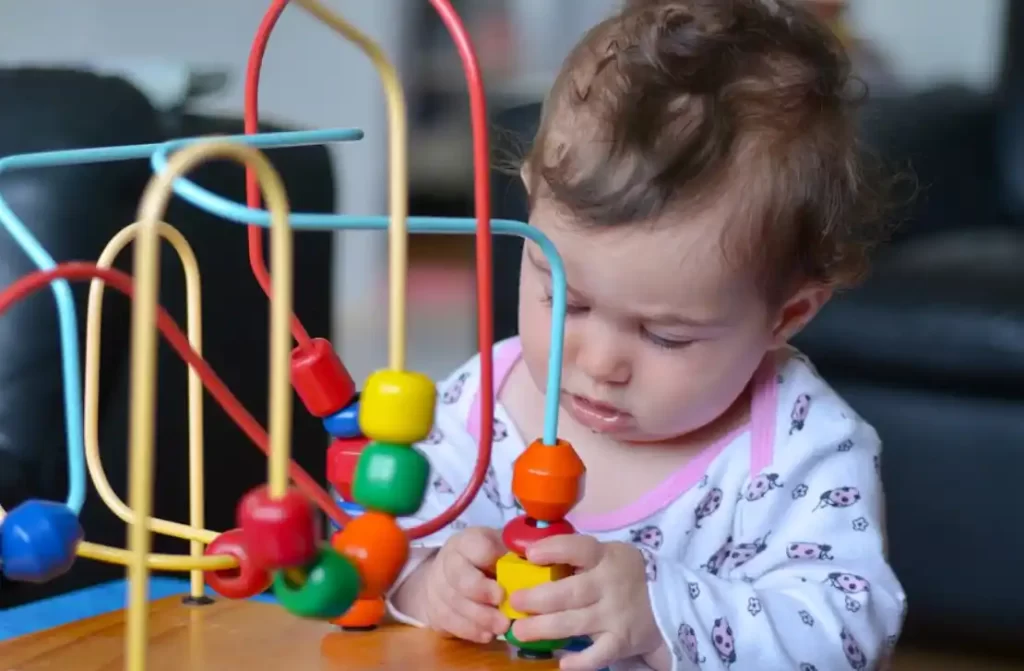
Solving mazes and assembling puzzles enhances visual motor integration skills and strengthens spatial awareness.
How it helps:
- Cultivates the ability to reason and solve problems.
- Enhances hand-eye coordination.
Promotes attention and concentration.
3. Cutting and Pasting Activities
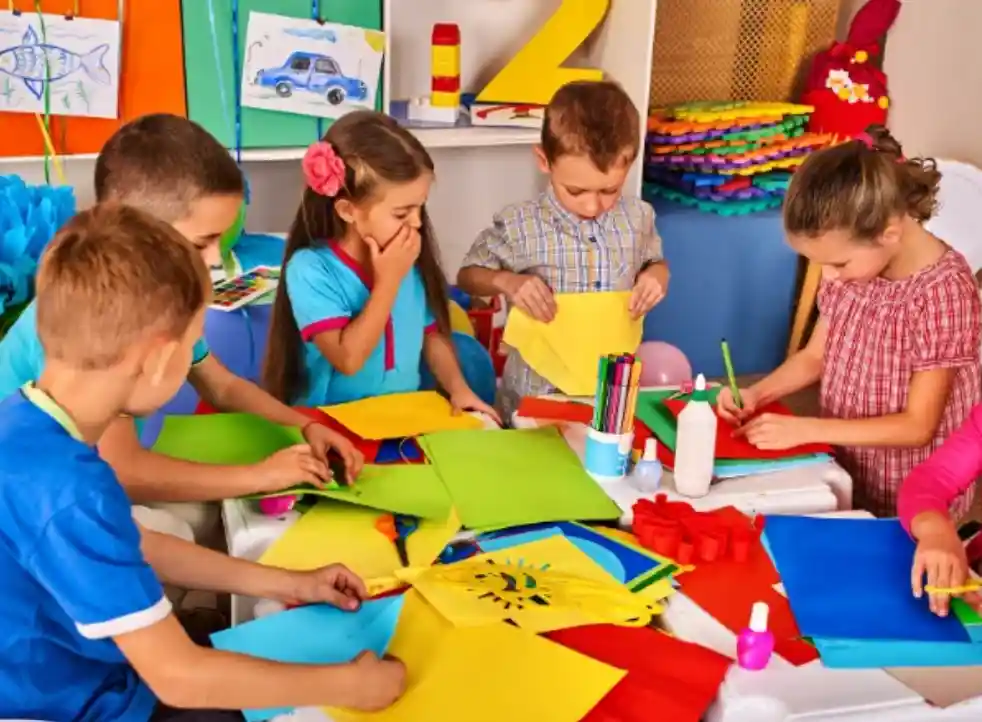
Using scissors to cut along lines and pasting shapes onto paper are essential visual motor activities occupational therapy uses for skill development.
How it helps:
- Helps make your hand movements better and strengthens your grip.
- Boosts coordination when using both hands.
- Helps you focus on finishing tasks.
4. Threading and Beading
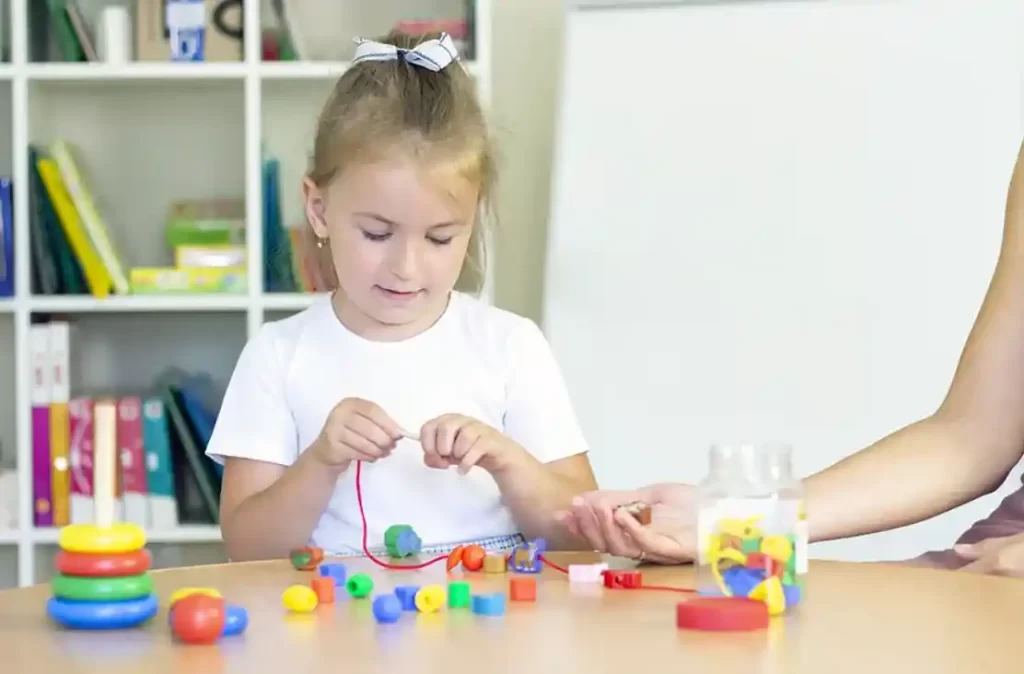
Threading beads onto a string helps improve visual motor processing and fine motor precision.
How it helps:
- Enhances finger dexterity and precision.
- Develops focus and patience.
- Improves eye-hand coordination for writing and daily activities.
5. Playing with Building Blocks (LEGO, Magnetic Tiles, etc.)
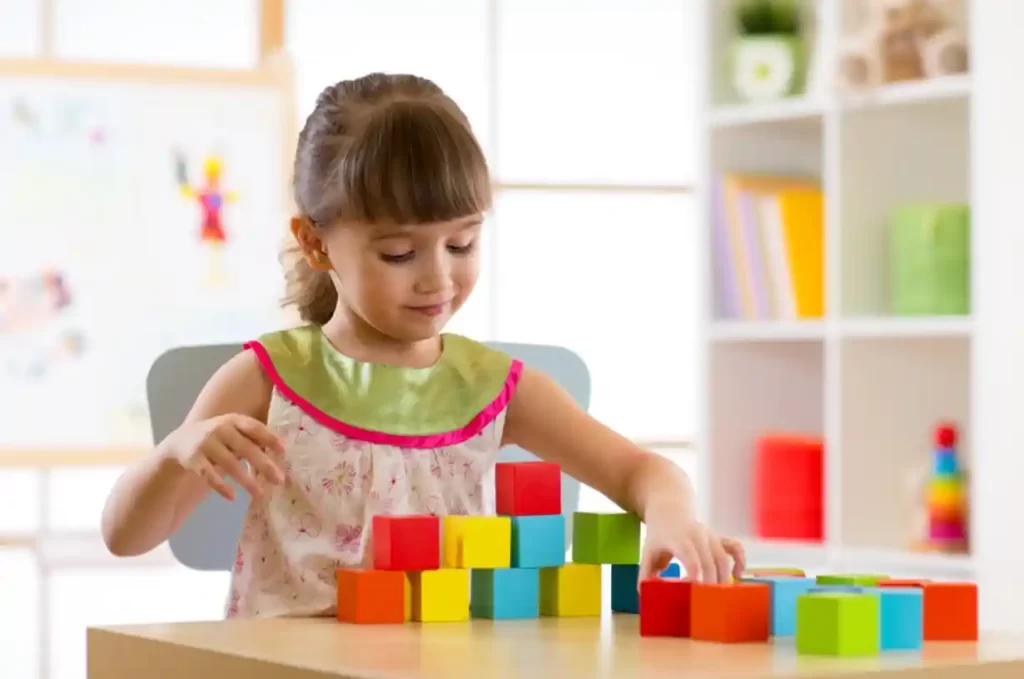
Constructing with LEGO or magnetic tiles enhances spatial awareness and strengthens visual motor integration for kids.
How it helps:
- It helps kids get creative and think outside the box.
- It builds stronger hands and better coordination.
It keeps them focused and engaged during play.
6. Handwriting and Letter Formation Activities
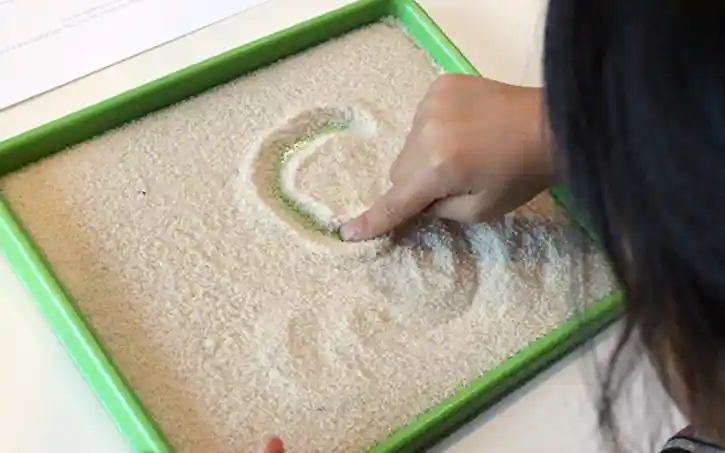
Practicing letter writing, tracing, and copying words improves visual motor integration handwriting skills.
How it helps:
- Strengthens grip control and precision.
- Improves writing fluency and neatness.
- Enhances focus in academic settings.
7. Ball Games and Target-Based Activities
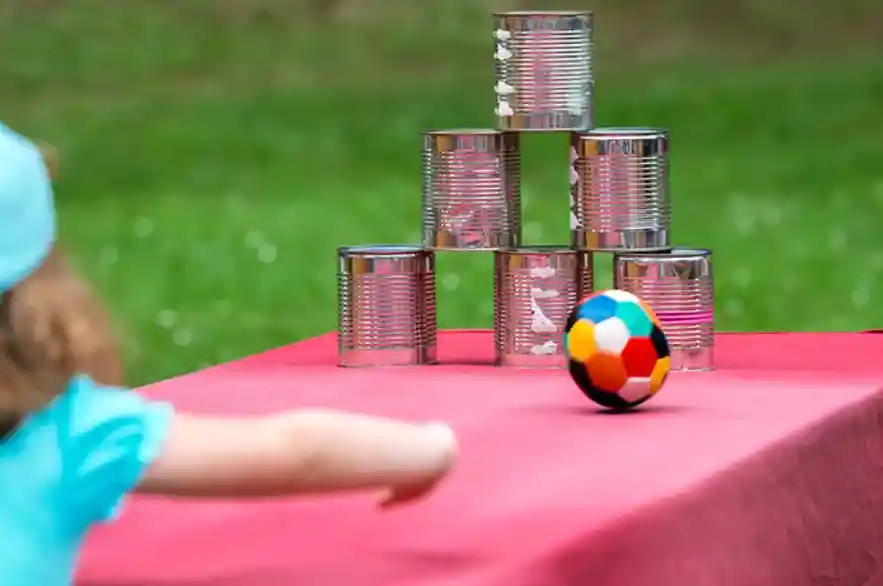
Catching, throwing, and aiming at targets help develop visual motor coordination and gross motor activities for visual motor integration.
How it helps:
- Strengthens hand-eye coordination.
- Improves spatial judgment and reaction time.
- Boosts focus and attention span.
8. Digital Visual Motor Games and Apps
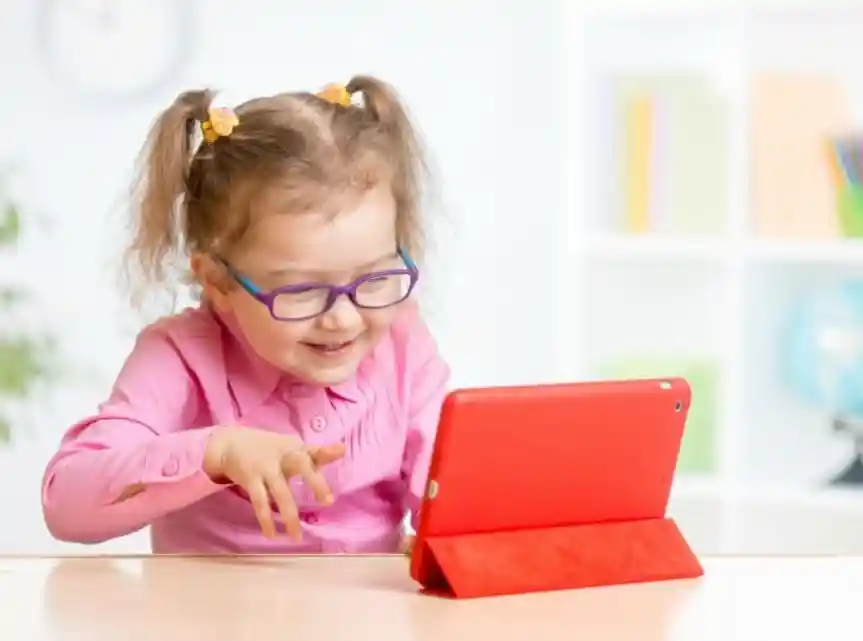
Interactive visual motor integration games help children refine their coordination and visual perception through engaging challenges.
How it helps:
- Enhances tracking and visual attention.
- Improves pattern recognition for reading and writing.
- Encourages active learning in a fun format.
These eight visual motor integration activities transform focus into fun! From hands-on tracing to digital play, they strengthen visual motor skills activities and attention effortlessly. Rooted in occupational therapy wisdom, they’re perfect for sparking growth. Try them today—your child’s sharper focus is just a playful step away in 2025!
Role of Occupational Therapists in Improving Visual Motor Integration in Children
Occupational therapy activities for visual perception constitute paramount importance for children with needs in the visual motor integration occupational therapy domain. The OT visual motor activities are used to:
- Strengthen visual processing skills for better focus.
- Enhance hand-eye coordination for daily activities.
- Address visual perception difficulties that impact writing and reading.
Early intervention with visual motor skills occupational therapy ensures children develop strong motor control and academic readiness.
Importance of Visual Motor Integration in Enhancing Children's Attention
Strong visual motor skills play a role in helping children focus, follow directions, and get details right while doing it.
Children with poor visual motor integration may find it challenging to focus on:
- Reading and writing activities requiring precise eye-hand coordination.
- Sports and games that need fast reflexes and movement control.
- Classroom tasks like copying from the board and organizing materials.
Practicing activities that help kids with visual motor skills is really important. It keeps them interested and focused. Plus, activities for visual motor integration makes them feel good about what they can do every day.
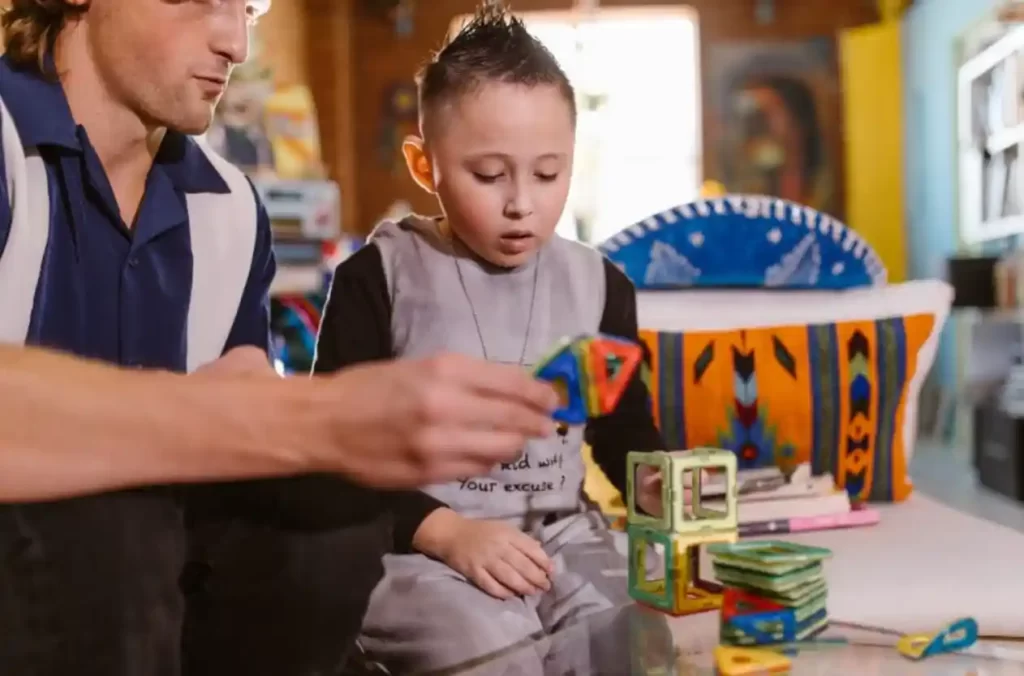
Getting kids to practice visual motor integration skills can really help them stay interested and confident. These visual motor integration activities for kindergarten truly help children get about more readily and do better in school. When parents and teachers include these activities in their teachings, children’s hand-eye coordination and fine motor skills can develop. This also helps them pay better attention span. Visual Motor Integration Activities Occupational therapy can really help kids who have visual motor integration challenges. It supports them as they develop and reach their goals.
FAQs
- Difficulty copying letters and shapes.
- Poor handwriting or trouble staying within lines.
- Struggles with puzzles and fine motor tasks.
At least 15-30 minutes daily for consistent improvement.
- LEGOs and building blocks
- Puzzles and tracing worksheets
- Beads and threading activities
Yes, interactive visual motor integration games can improve tracking, attention, and coordination.
Yep. Visual motor exercises practiced by children with ADHD, dyslexia, and other learning difficulties help them remain active, alert, and confident in their day-to-day actions.

